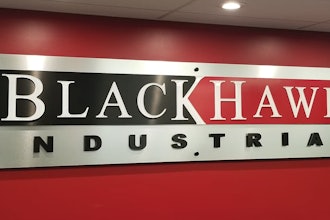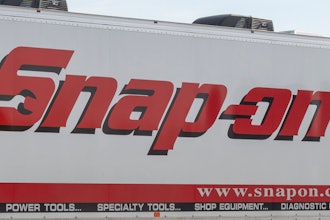Industrial Distribution Insights
page 1 of 2
It has been an eventful year for middle
market M&A, with valuations on the
rise and private equity players fiercely
competing for high-quality investments.
For many middle market distribution
business owners, partnering with a
private equity firm to diversify personal
wealth while positioning a company
for higher growth is an increasingly
attractive alternative. Furthermore,
M&A offers a way to capitalize on
today’s unprecedented transaction
valuation multiples without disrupting
a company’s culture, employees and
management autonomy.
In an effort to guide business owners
who seek to better understand their
options, we recently sat down with
representatives from AEA Investors and
KeyBanc Capital Markets, both highly
focused and experienced with investing
in and advising industrial distribution
companies. The discussion provides
insights applicable to middle market
distribution business owners from both a
buy-side and sell-side perspective.
Is now a good time for industrial
distribution (ID) companies to explore a
private equity investment?
Baron (AEA): Absolutely. We have
seen a significant pickup in M&A volume
throughout the year. As the economy
continues to recover, capital comes out
of the woodwork. In 2014, we’ve seen
significant interest in the ID sector from
private equity players competing with
one another for quality deals—even
greater than in 2007, our benchmark for
a peak year. The abundance of capital
on the sidelines relative to the number
of available opportunities has resulted
in elevated valuations and a continuing
strong market for business owners to
explore a liquidity event. While many
business owners remain hesitant to
explore a transaction with private equity,
it is important to understand the benefits
of exploring a partnership transaction
in today’s strong market. The reality is,
here at AEA we are more interested in
investing in business owners seeking
to grow their companies versus those
simply looking to sell.
T.J./John (KBCM): The availability of
private equity sits at near record levels.
Industry data shows the amount of money
raised and not yet invested, referred to in
investment circles as “dry powder,” was a
record $1.073 trillion globally at the end of
2013, up almost $130 billion versus 2012.
And the pace has continued well into
the first half of 2014, as firms have close
to $1.141 trillion in private equity capital
waiting to be invested.
This year will continue to be a seller’s
market, and less volatile than the last few
years. In 2012, tax considerations drove
an increased amount of M&A before the
start of 2013, so 2013 numbers were
artificially low. Now, interest from capital
sources has become exceptionally
strong, coupled with a robust debt
financing environment resulting in a
seller-friendly market. Also, business
owners are realizing that they can benefit
from diversifying personal wealth and
aligning with a partner to accelerate
From the Trenches: Inside Industrial Distribution M&A
In this Q&A, Baron Carlson, Partner in AEA Investors LP’s Small Business Fund, one of the most active private equity investors
in the industrial distribution sector, and T.J. Monico and John Newman of the KeyBanc Capital Markets® (KBCM) industrial
investment banking group, share perspectives on the market for mergers and acquisitions (M&A) in the distribution industry.
growth while valuation multiples are at
peak levels, and purchase agreement
terms are favorable.
Deloitte LLP polled 525
middle market executives and
found 57% of them expect to
or would be willing to pursue
a private equity partner in
2014. (Source: Deloitte “2013 Report
on America’s Economic Engine.”)
How should a company prepare for
private equity investment?
Baron (AEA): Before a company
considers private equity options, they
need to be prepared to very clearly
answer the following three questions (in
order to maximize value and interest):
1) How does the company plan to grow?
2) How does the company plan to
compete and take market share?
3) How do customers view the company
relative to the competition?
Where we have invested successfully
in the past, it has been with companies
that understood their marketplace
extremely well and developed
competitive advantages in how they
serve and support their customers. They
have had a plan to sustain and build on
their growth, either through acquisition
or by organically growing their business.
T.J./John (KBCM): Companies should
be ready and able to clearly articulate
their value proposition to potential
investors. How are they executing on
their business plan and what makes
them better, or different, than their
competitors? And they should be
prepared with supportable financial
Industrial Distribution Insights
page 2 of 2
projections that show how they will
grow and be successful, demonstrating
a compelling forward-looking story.
By illustrating unique competitive
positioning and strong planning,
business owners look more attractive
to potential investors.
What are the common mistakes
companies make when seeking a
private equity partner?
Baron (AEA): Sometimes business
owners become too focused on
operations at the expense of strategy.
The strongest executives find time to
develop a strategic plan, execute it,
and think more broadly about market
opportunities. Admittedly, it’s hard to
simultaneously operate and plan; that’s
why having a strong management team
is so critical to running a successful
industrial distribution business long-term.
Another shortcoming we encounter
is the business owner who knows
everything about their own business,
but lacks a true understanding of
their competition. Companies that are
successful over the long term pay close
attention to the competitive landscape.
T.J./John (KBCM): When companies
fall short, it is more often than not due
to an inability to articulate who they
are, what they are doing, and why
they have and will continue to beat
the competition. For example, if you’re
not prepared to articulate a view on
investing in talent, new products, and
markets, you’re not going to successfully
position the company for investment at
a premium valuation.
What do companies stand to gain with
a private equity partner?
Baron (AEA): Our philosophy is to give
companies the freedom and autonomy
they need to grow their business.
We invest in strong management teams,
and empower them to do what they
do best. Where we get involved is at
the board level, where we can help
companies think strategically through
the resources necessary for growth
and the longer-term business planning.
Many privately owned companies have
been financing growth out of their own
pocket. A private equity partner can
provide a larger capital base and a much
wider corporate network from which
to successfully grow via acquisition, as
well as valuable insights and contacts.
For example, ERP implementation, sales
force/geographic expansion, entering
new end markets, acquisitions, HR/
recruiting, among many others.
T.J./John (KBCM): There is a common
misperception that companies give up
more than they get when they partner
with private equity. In my experience,
however, companies gain much more
than just capital. They gain access to
business expertise and guidance, not
to mention the ability to diversify their
personal wealth. In the end, owners still
enjoy freedom to run the business, but
with a partner who provides them the
additional capital and resources to do so.
The middle market grew at a
rate that was five times faster
than the S&P 500 in 2013.
For 2014, middle market revenue is
projected to increase 4.3% (organically)
and employment to grow by 2.2%.
Combined with an understanding that
the distribution model held up relatively
well during the recession, this should be
good news to private equity investors.
(Source: National Center for the Middle
Market Survey.)
What’s the most important thing
for a business owner to understand
about the market right now when
considering a private equity partner?
Baron (AEA): There is a scarcity of
high-quality distribution businesses right
now, so it is a very favorable environment
for ID companies to begin evaluating
options. Investors like AEA are looking for
those high-quality companies ready to
take their business to the next level. And it
all starts with a quality management team.
T.J./John (KBCM): For many
companies, the rewards of aligning with
a private equity partner outweigh the
risks – but this seller’s market won’t
last forever. As more companies take
advantage of today’s compelling market
dynamics, a more balanced market
should return in the next several years
where valuations will return to more
normalized levels.
To learn more, contact:
Baron Carlson, Partner,
AEA Investors LP, Small Business
Fund, at 212-702-0545 or
[email protected]
Visit aeainvestors.com
T.J. Monico, Industrial Distribution
Investment Banking,
KeyBanc Capital Markets,
at 216-689-3079 or
[email protected]
John Newman, Industrial Distribution
Investment Banking,
KeyBanc Capital Markets,
at 216-689-5496 or
[email protected]
Visit key.com/industrial
Sources: KeyBanc Capital Markets, Industrial Distribution Media, Industrial Supply Association, U.S. Department of Labor Bureau of Labor Statistics.
This article is for general information purposes only and does not consider the specific investment objectives, financial situation, and particular needs of any individual person or entity.
KeyBanc Capital Markets is a trade name under which corporate and investment banking products and services of KeyCorp and its subsidiaries, KeyBanc Capital Markets Inc., Member
NYSE/FINRA/SIPC, and KeyBank National Association (“KeyBank N.A.”), are marketed.
AEA Investors LP’s Small Business Fund and KeyBanc Capital Markets are not affiliated with one another. The individual views expressed herein are those of the individual authors and do
not necessarily reflect the views of AEA Investors LP’s Small Business Fund or KeyBanc Capital Markets, as applicable. ADL7538
From the Trenches: Inside Industrial Distribution M&A
Private equity and investment banking experts from AEA Investors and KeyBanc Capital Markets share perspectives on the market for mergers and acquisitions (M&A) in the distribution industry.
Latest in Home






















